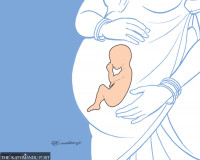Health
Cholera vaccination drive launched in select Kathmandu localities
Over 95,000 people above one year from wards 11,12 and 13 of Kathmandu Metropolitan City will be administered two doses of the oral cholera vaccine.
Arjun Poudel
The Epidemiology and Disease Control Division has started administering the oral cholera vaccine in wards 11, 12 and 13 of the Kathmandu Metropolitan City.
The campaign aims to lessen the risk of an outbreak of the deadly contagion and severity of infection in the upcoming monsoon, officials say.
“We have been administering an oral cholera vaccine in the high-risk wards of the metropolis,” said Dr Chuman Lal Das, director of the division. “Everyone above one year of age in the said wards will be administered the vaccine.”
Officials say the vaccine doses were supplied by the International Vaccine Institute.
Last year, the Kathmandu Valley witnessed a massive cholera outbreak in which at least 77 cases were confirmed. Hundreds of people suffered from the diarrheal infection that continued for months.
Vibrio cholera 01 Ogawa serotype was confirmed in stool samples of the victims at the time.
Cholera is a highly infectious disease that causes severe diarrhoea and vomiting, and leads to dehydration and even death within a few hours if left untreated.
Cases of cholera were reported at Bagbazar, Dillibazar, Balaju, Balkhu, Sanepa, Kapan, Naikap, Kageshwari Manohara, Bhaktapur, and Jaisidewal areas in the Valley.
Public health experts had said the number of reported cases could be just the tip of the iceberg, as only around 10 percent of the people infected with cholera develop severe symptoms such as watery diarrhoea and vomiting.
Officials say wards 11, 12 and 13 of the metropolis have been selected for the vaccination drive, as more cases were detected in those wards during last year’s outbreak.
The vaccine is being administered in some schools and from booths set up for the purpose. Along with vaccination, health authorities have also been running water, sanitation and hygiene programmes with the support of the World Health Organisation, Unicef and other agencies concerned. They have also been collecting drinking water samples for testing.
A study carried out by the health ministry following the outbreak last year showed that nearly 70 percent of drinking water samples in Kathmandu Valley were found to have been contaminated with E coli and faecal coliform.
The cholera outbreak was blamed on contaminated water with the increase in rainfall and disruption in garbage collection in Kathmandu Valley. Several other factors, including the condition of supply pipes, water storage, and pollution in water sources affected the quality of water supplied to households, officials said.
Due to poor sanitation and hygiene conditions, Nepal is highly vulnerable to water-borne diseases, including diarrhoea, dysentery, typhoid, hepatitis, and cholera, with thousands of people falling sick every year.
In October 2021 also, a cholera outbreak in several local units of Kapilvastu killed at least six, including three minors and infected hundreds of people. Health authorities had launched a ring vaccination programme in the affected areas.
Doctors say launching awareness drives against water-borne diseases and ensuring safe drinking water are the only ways to save people from dying from water-borne diseases, including cholera. A combination of surveillance, water, sanitation and hygiene, social mobilisation, and treatment is required to contain the spread of the infection, according to them.
The World Health Organisation says cholera is a global threat to public health and a multifaceted approach is key to controlling the disease and reducing deaths.




 4.91°C Kathmandu
4.91°C Kathmandu














